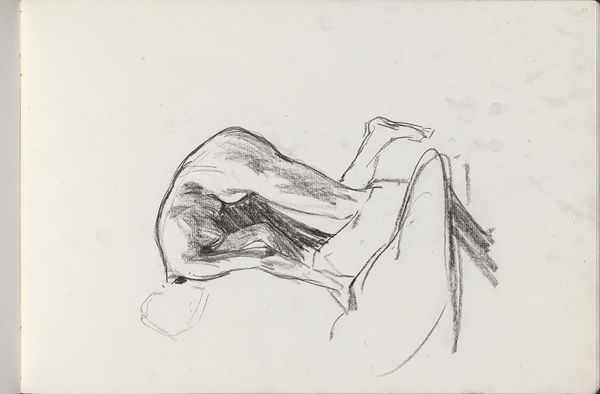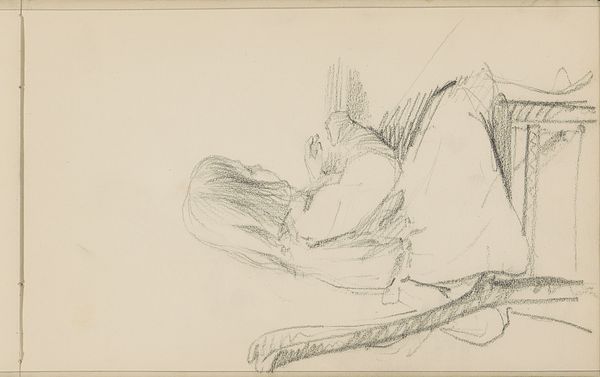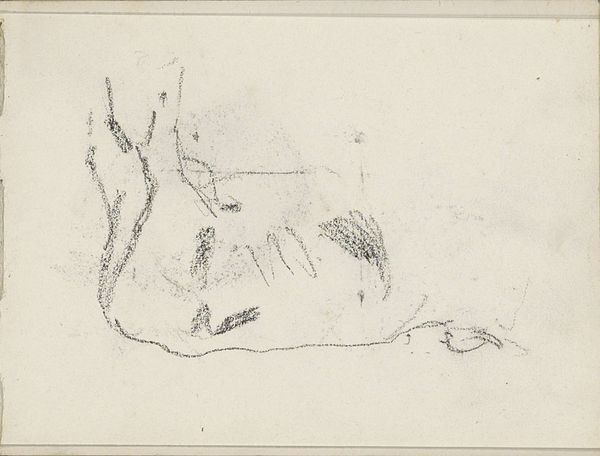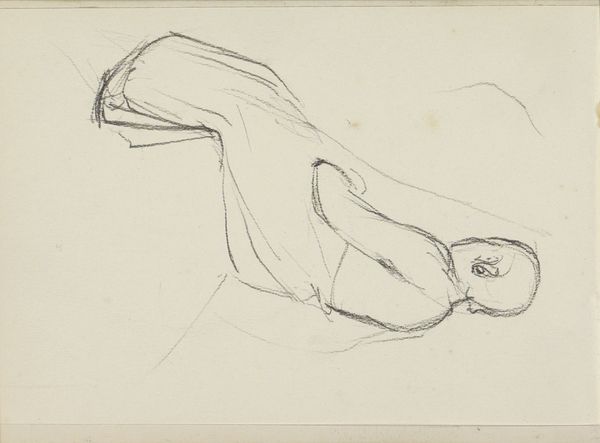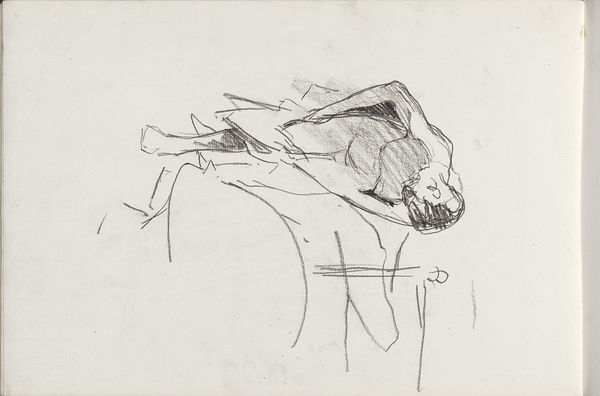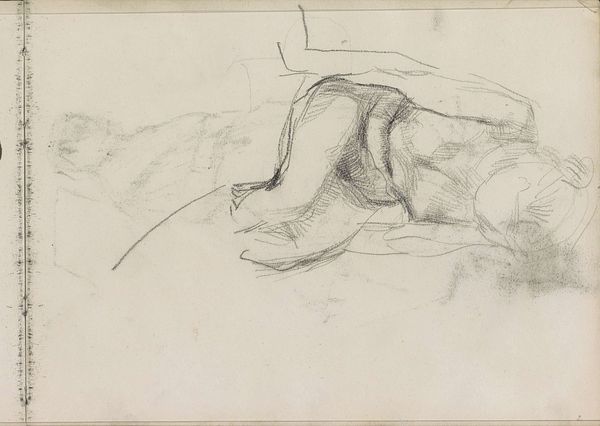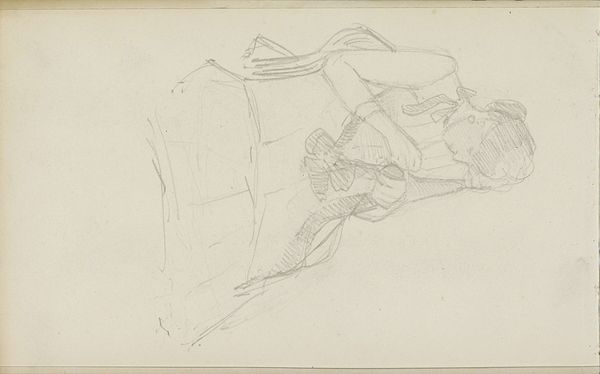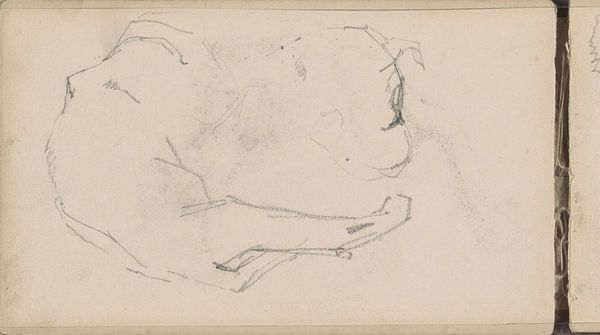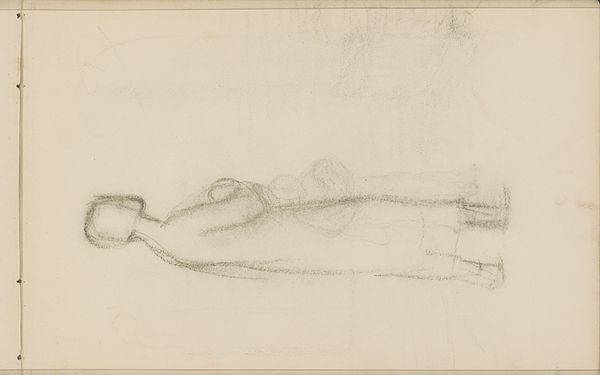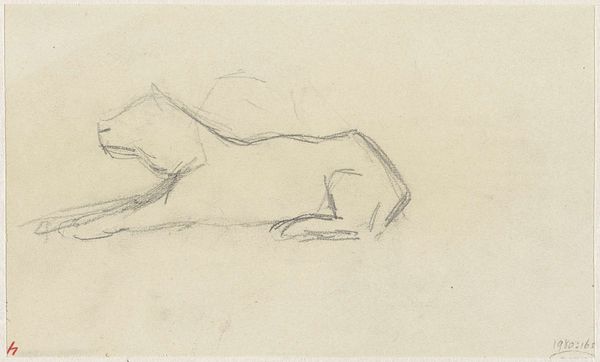
drawing, paper, pencil
#
portrait
#
drawing
#
amateur sketch
#
light pencil work
#
impressionism
#
pencil sketch
#
incomplete sketchy
#
figuration
#
paper
#
personal sketchbook
#
ink drawing experimentation
#
sketch
#
pen-ink sketch
#
pencil
#
sketchbook drawing
#
pencil work
#
initial sketch
Copyright: Rijks Museum: Open Domain
Curator: Here we have Willem Witsen's pencil drawing, "Abklatsch van de krijttekening op pagina 25," created sometime between 1887 and 1892. It is held here at the Rijksmuseum. Editor: There's a rawness to it, almost an accidental beauty. The faint lines feel incredibly intimate, like catching a glimpse of something private and fleeting. Is that a figure reclining? Curator: It is, though not a finished piece. Consider the implications of "Abklatsch," meaning a copy or rubbing. Witsen seems to have been exploring layering and perhaps indirect representation—the copy itself as a form. Note how the paper itself contributes; the weave and texture create atmosphere. Editor: So, the act of reproducing becomes the focus? I’m wondering, within the context of late 19th-century art education, was this a common exercise? To what extent does the unfinished quality of the piece reflect anxieties about authorship or authenticity? Who gets represented, and how? Curator: Indeed. The impressionistic, sketchy style can speak to that sentiment of artistic experimentation. This resonates with Impressionism, in that it rejects academic perfection and embraces capturing the immediacy of the moment. The pencil on paper almost dematerializes the figure, leaving us with the faintest traces of what it used to be, questioning permanence and identity itself. Editor: Yes, the lack of solid form is striking, and how that impacts our assumptions and perhaps also historical views about body images. I am so used to viewing bodies as firm statements, or representations of social norms and political aspirations. Instead this figure is evanescent, suggesting fragility or even resistance. Perhaps even subverting those patriarchal visual strategies to display bodies as conquests. Curator: Precisely. The seemingly incomplete nature offers us a glimpse into the artist's thought process, almost as if we are viewing an archeological find and reconstructing it to mean something specific. This could change every time it's looked upon and every time the sociohistorical view of it changes. Editor: So much meaning derived from seeming fragility! Looking closer, what seems minimal becomes incredibly evocative. This is a wonderful example of how “less” can be so much “more,” right? Curator: It gives the impression that something delicate, precious might be about to disappear... Thank you.
Comments
No comments
Be the first to comment and join the conversation on the ultimate creative platform.
